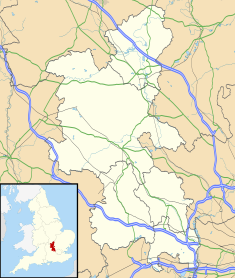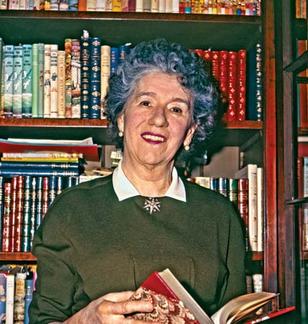
Enid Mary Blyton was an English children's writer, whose books have been worldwide bestsellers since the 1930s, selling more than 600 million copies. Her books are still enormously popular and have been translated into ninety languages. As of June 2019, Blyton held 4th place for the most translated author. She wrote on a wide range of topics, including education, natural history, fantasy, mystery, and biblical narratives. She is best remembered today for her Noddy, Famous Five, Secret Seven, the Five Find-Outers, and Malory Towers books, although she also wrote many others, including; St. Clare's, The Naughtiest Girl, and The Faraway Tree series.
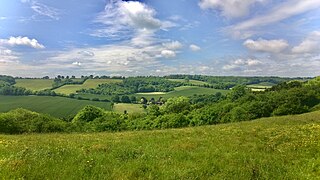
Buckinghamshire is a ceremonial county in South East England and one of the home counties. It is bordered by Northamptonshire to the north, Bedfordshire to the north-east, Hertfordshire to the east, Greater London to the south-east, Berkshire to the south, and Oxfordshire to the west. The largest settlement is the city of Milton Keynes, and the county town is Aylesbury.

The London Borough of Bromley is a borough in London, England. It borders the county of Kent, of which it formed part of until 1965. The borough's population in the 2021 census was 329,991. It is named after Bromley, its principal district. Other districts are Penge, Hayes, West Wickham, Chislehurst, Beckenham and Orpington. The local authority is Bromley London Borough Council.

Beaconsfield is a market town and civil parish in Buckinghamshire, England, 23+1⁄2 miles northwest of central London and 16 miles southeast of Aylesbury. Three other towns are within five miles : Gerrards Cross, Amersham and High Wycombe.

Noddy is an English character created by English children's author Enid Blyton. Noddy first appeared in a book series published between 1949 and 1963, illustrated by the Dutch artist Harmsen van der Beek from 1949 until his death in 1953, after which the work was continued by Peter Wienk. Television shows based on the character have run on British television from 1955 to 2020.

Bekonscot Model Village and Railway is a model village built in the 1920s in Beaconsfield, Buckinghamshire, UK at a scale of one inch to one foot. It portrays aspects of England mostly dating from the 1930s and contains several fictitious villages featuring replicas of notable local buildings. The model railway has almost 10 scale miles of tracks and in 2001, a 7 1/4 in gauge railway was opened to transport visitors. Bekonscot has become both a popular tourist location and a part of English culture. It is commonly referred to as the oldest surviving model village in the UK and by 2020, had received over 14 million visitors. Authors such as Enid Blyton, Mary Norton and Will Self have been inspired by the village.
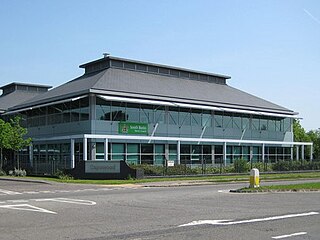
South Bucks was one of four local government districts in the non-metropolitan county of Buckinghamshire, in South East England.

Knotty Green was once a rural hamlet in the Buckinghamshire Chiltern Hills. It is characterised by large houses set in their own extensive grounds and though it remains within the civil parish of Penn today it has become contiguous with the market town of Beaconsfield. Houses in the area of Knotty Green are often some of the most expensive in the country with houses often exceeding 6,000 sq ft, and £3 million in value.

The Beaconsfield School is a co-educational secondary school and sixth form with academy status, located in Beaconsfield, Buckinghamshire, England. The school has approximately 870 pupils.
This is a list of 762 books by Enid Blyton (1897–1968), an English children's writer who also wrote under the pseudonym of Mary Pollock. She was one of the most successful children's storytellers of the 20th century.

The town of Chesham formed a local government district in the administrative county of Buckinghamshire, England from 1884 to 1974. It was administered as a local government district from 1884 to 1894, and as an urban district from 1894 to 1974.

The town of Beaconsfield formed a local government district in the administrative county of Buckinghamshire, England from 1850 to 1974. It was administered as a local board district from 1850 to 1894, and as an urban district from 1894 to 1974.

Green Hedges was a large house situated off Penn Road in Beaconsfield, Buckinghamshire. It was the home of Enid Blyton from 1938 until shortly before her death. She wrote most of her books there, and it was the location of her famous Story Parties.
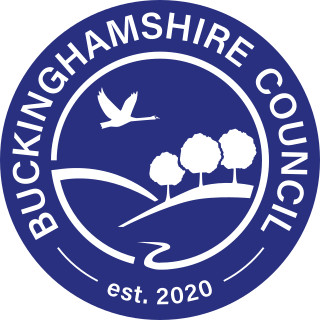
Buckinghamshire Council is the local authority for the non-metropolitan county of Buckinghamshire in England. It is a unitary authority, performing both county and district-level functions. It was created on 1 April 2020, replacing the previous Buckinghamshire County Council and the councils of the four abolished districts of Aylesbury Vale, Chiltern, South Bucks, and Wycombe. The non-metropolitan county is smaller than the ceremonial county, which additionally includes Milton Keynes.

High Wycombe Town Hall is a public building located on Queen Victoria Road in High Wycombe, Buckinghamshire, England. The building, which is used as an events venue, is a Grade II listed building.

Sale Town Hall is a municipal building on School Road in Sale, Greater Manchester, England. The town hall was the headquarters of Sale Borough Council until the council was abolished in 1974.

Aylesbury Town Hall is a name which has been used for two different buildings in Aylesbury, Buckinghamshire, England. Since 2007 the name has been used for an office building at 5 Church Street, which serves as the headquarters of Aylesbury Town Council. The name was also formerly used for a complex of buildings which had been built in 1865 as a corn exchange in Market Square, and which served as the offices and meeting place of the local council from 1901 to 1968. The majority of the old town hall was demolished shortly afterwards, leaving only the entrance archway facing Market Square still standing, now called Town Hall Arches. This remaining part of the old town hall is a Grade II* listed building as part of the range of civic buildings on the southern side of Market Square including the old County Hall.

Marlow Town Hall is a municipal building in the Market Square, Marlow, Buckinghamshire, England. The structure, which was used as a public events venue, is a Grade II* listed building.

Liversedge Town Hall is a former municipal building and town hall on Knowler Hill in the town of Liversedge, West Yorkshire, England. The building, which formerly operated as the offices of Liversedge Urban District Council, is now used as private residential accommodation.

The Municipal Offices are located on Queen Victoria Road in High Wycombe, Buckinghamshire, England. The structure is used as the High Wycombe local area office of Buckinghamshire Council.
